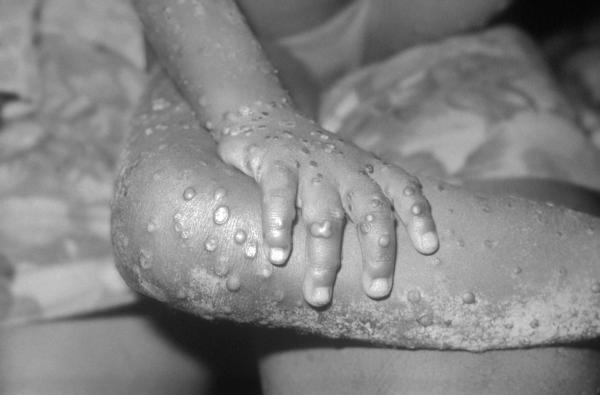As tempting as it is, freaking out about most anything -- especially infectious diseases -- tends to render us useless and is not in our best interest. In recent years, Zika and Ebola caused a stir, even a national hysteria. Now, monkeypox has arrived on the media scene.
With a catchy name hearkening back to images of smallpox and its devastation, this animal moniker only makes it all more exotic and worrisome. But, like most infectious agents, informing yourself about its origin, mode of spread and emphasizing proper precautions for disease prevention will allow your concerns to subside.
So, before The Washington Post freaks you out with this headline “U.S. and Congolese scientists are tracking a virus. At a time when a deadly disease can cross the globe, they need to understand the mysterious monkeypox. CHASING A KILLER” and some sensational story-telling or The Guardian’s “The Monkey Pox Scare,” familiarize yourself with the panic du jour.
Before the news starts to instill fear, here are some facts:
What is monkeypox?
It is a rare illness occurring from infection with monkeypox virus-- belonging to the same family as variola virus or smallpox. It got its name in 1958 when a pox-like disease afflicted research monkeys in Copenhagen, Denmark. The first documented case in humans was identified in 1970 in the Democratic Republic of Congo. It is believed the African rodent is involved in transmission, though the exact host is uncertain.
There are at least two strains, West Africa and Central Africa types. The former is typically a milder course without person-to-person spread. Such is not the case for the latter which spreads between humans and causes severe sickness.
Where is it a problem?
Traditionally, the virus affects people in central and western Africa—in particular, rural and remote locales in close proximity to rainforests. In 2003, there was an outbreak in the United States due to infected imported animals. Prairie dogs purchased as pets had acquired the disease from co-housing with the contaminated stock. Once infected, it is believed to have spread to humans via bites and scratches. This is the only circumstance where it extended beyond the African continent. The Centers for Disease Control (CDC) changed restrictions on animal entry to the U.S. and through a variety of their efforts the situation was readily contained. (To learn more, read the CDC’s site here).
What happens to a person who contracts the disease?
Like many illnesses initial symptoms are vague: fever, fatigue, muscle aches, soreness, headache and swollen lymph nodes (in some this is severe making it unique to similar conditions). As it progresses, the skin lesions appear often first on the face, then the body. The face, palms and soles are the most impacted but inside the mouth, the genitals and even the cornea can be involved. This rash evolves from flat to raised to fluid-filled with pus until they begin to scab, crust and fall off.
From the time you are exposed until you show symptoms, can range from just shy of a week to two weeks with variability up to three weeks. The disease itself can linger for a few weeks up to one month.
It tends to be more mild than smallpox, although some deaths have been reported.
How do you get it?
It is an uncommon zoonotic disease --or one spread from animal to human—that involves direct contact with an infected animal’s bodily fluids (e.g. blood, skin or mucosal lesions, possibly ingestion of inadequately cooked meat or handling of bedding of sick animal).
When spread between people, respiratory droplets from protracted face-to-face contact are culpable. Those living with or caring for an acutely ill person are at high risk. Contact with skin sores of an infected person or surfaces recently exposed to those fluids can place an individual at risk.
According to the World Health Organization (WHO), “there is no evidence, to date, that person-to-person transmission alone can sustain monkeypox infections in the human population.”
What’s the prognosis? Are there treatments?
For most, it is a self-limiting illness that warrants supportive care. As there is no cure or specific treatment for monkeypox virus, fatality ranges from 1%-10% and is more likely in young children. The outcome depends a lot on an individual’s clinical status and health history as well as extent of exposure.
Smallpox vaccine is considered 85% effective against monkeypox. But, since the disease's eradication, it is no longer available to the general public. Those who did receive it in the past would likely experience less severe symptoms.
Prevention is key.
Continuing bans of certain animals from these endemic regions and effective quarantines help limit spread. Educating people on how to avoid contracting the illness when there is an outbreak as well as early medical detection is essential. Infection control measures should be readily disseminated from thoroughly cooking animal products before ingesting to implementing frequent hand-washing, gloves and appropriate protective gear when caring for loved ones or patients. Health care workers might require smallpox vaccination by their respective nations and will need to handle samples with caution.
Like with many contagious diseases, those most vulnerable to more severe illness including but not limited to children and the immune-suppressed should take greater precautions.
In summary…
In a country like the United States, we are quite fortunate to have advanced systems in place for rapid implementation of infection control measures that can effectively contain outbreaks. Additionally, due to a robust public health infrastructure and advanced medical treatment facilities, conditions like these can be optimally managed and bad outcomes can be minimized.
Now that you are armed with some facts, reviewing published stories should be less stressful.




